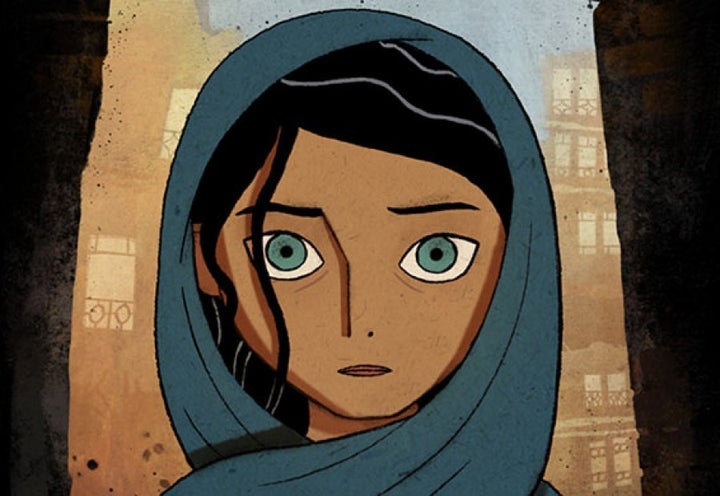By Shabana Basij-Rasikh and Amb. Melanne Verveer
Headlines about Afghanistan tend to depict the latest violence in a continuing conflict. While there is truth to these reports, there is another truth far less told: Women and girls have made significant progress since the overthrow of the Taliban regime in 2001.
The Taliban imposed a strict Islamic ideology throughout the country, stripping Afghans of their rights and terrorizing women and girls. When the Taliban took control of the country in 1996, girls’ education became illegal. Women were forbidden from working and could not leave their homes; when they did, they had to be escorted by a male relative and dressed in a full head-to-toe burqa. Women’s rights were not protected under the Constitution and women had nowhere to go if they faced abuse or threats from men in society.
The hardships experienced by girls are depicted in a new animated film, The Breadwinner, executive produced by Angelina Jolie. It tells the story of Parvana, an 11-year-old girl growing up under the Taliban in Afghanistan. When her father is arrested for having a foreign education, Parvana disguises herself as a boy in order to be able to support her family. The remarkable film reminds us about a time in recent Afghan history that greatly tested the resilience and strength of the Afghan people. We might ask ourselves, “What has changed?”

The Breadwinner will be in theaters nation-wide on November 17.
When American forces and their allies toppled the Taliban regime, they helped to return the country to a civil society with democratic elections and basic human rights. The conflict with the Taliban, however, has endured, and there are still major obstacles, including security, that need to be overcome if a peaceful and prosperous Afghanistan is to emerge. But despite the setbacks, Afghanistan has made progress for women and girls since the fall of the Taliban that should be acknowledged, although, to be sure, there is much more to be achieved.
When the Taliban were toppled in 2001, there were zero girls in school. Today, one in three girls receives an education. Though the educational system in Afghanistan has a great number of flaws, it is one of the country’s greatest successes. It is noteworthy that even in areas where the Taliban continue to have an influence, families are defying their rules by sending their daughters to school in spite of threats. Afghans have hope of a brighter future for their children—their sons and daughters.
Today, women are able to engage in the workplace. While Afghanistan remains in the top ten countries with the highest maternal mortality rate, it no longer tops the list. Women have mobilized to create civil society organizations, many more women have been appointed judges, and women represent a significant percentage of parliament and civil service. Furthermore, the government has established a goal for women to represent 30% of government employees in high-level, decision-making positions by 2020.
Women are now protected under Afghanistan’s constitution, which guarantees equal rights to both men and women. It is true that Afghanistan has a long way before it can catch up to the laws that have been put in place in recent years, but the fact that the laws exist is a major stepping-stone towards establishing the fullness of equal rights.
Culture is also changing. For example, under Taliban rule, televisions and music were banned from the home. The media was tightly controlled by the regime, which monitored all communications. Today Afghanistan has 150 radio stations, 50 private television stations and 22 state-owned channels. The content is no longer censored by authoritarian rule and freedom of the press has been growing. For example, a popular television show called Afghan Star, based on American Idol, has made headway throughout the country. This show has a way of unifying people: men, women, Pashtuns, Hazaras, old, and young come together as one group to determine the outcome of the contest. In this year’s season, one of the top two contenders was Zulala Hashimi, a 16 year-old female high-school student from Nangarhar who was raised by her widowed mother.
Peace remains elusive in Afghanistan, and no one wants to see an end to fighting more than the women who have suffered disproportionately. At the same time, they don’t want their rights to be compromised in a potential agreement that would push their progress backwards. Their participation in any future negotiations is critical if an eventual peace is to be sustained.
What emerges in Afghanistan is the remarkable resiliency and ability to work towards and hold on to hope for a better life. Girls no longer have disguise themselves to go to school, as did the character Pravana in The Breadwinner, but the hard earned achievements are still fragile.
Shabana Basij-Rasikh is president and co-founder of the School of Leadership Afghanistan (SOLA).
Melanne Verveer is the Executive Director of the Georgetown Institute for Women, Peace and Security. Ambassador Verveer served as the first U.S. Ambassador for Global Women’s Issues.